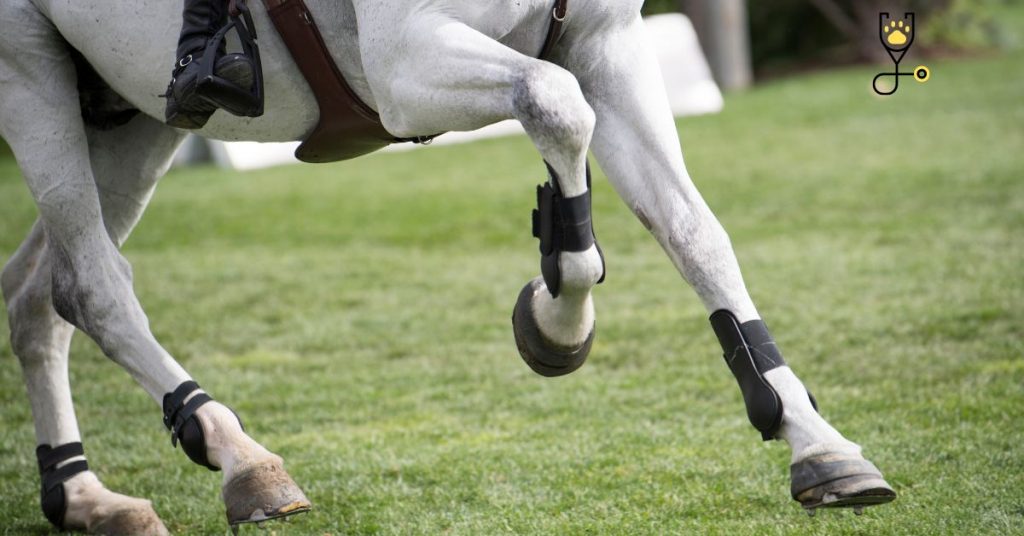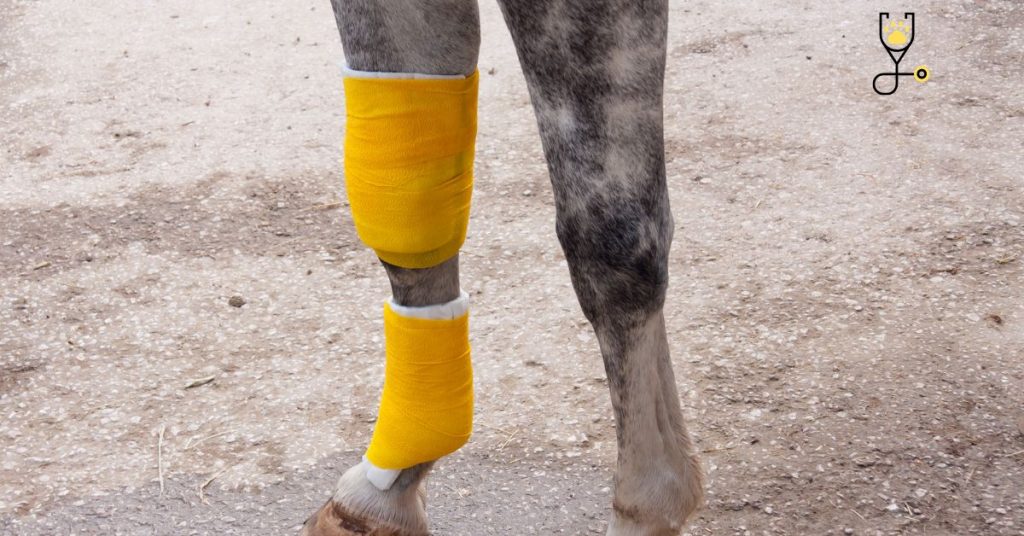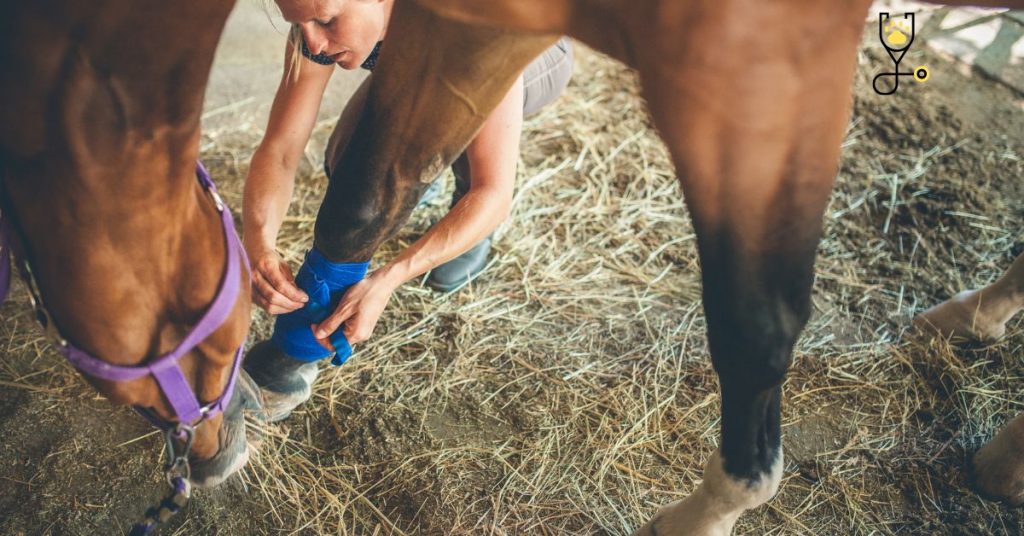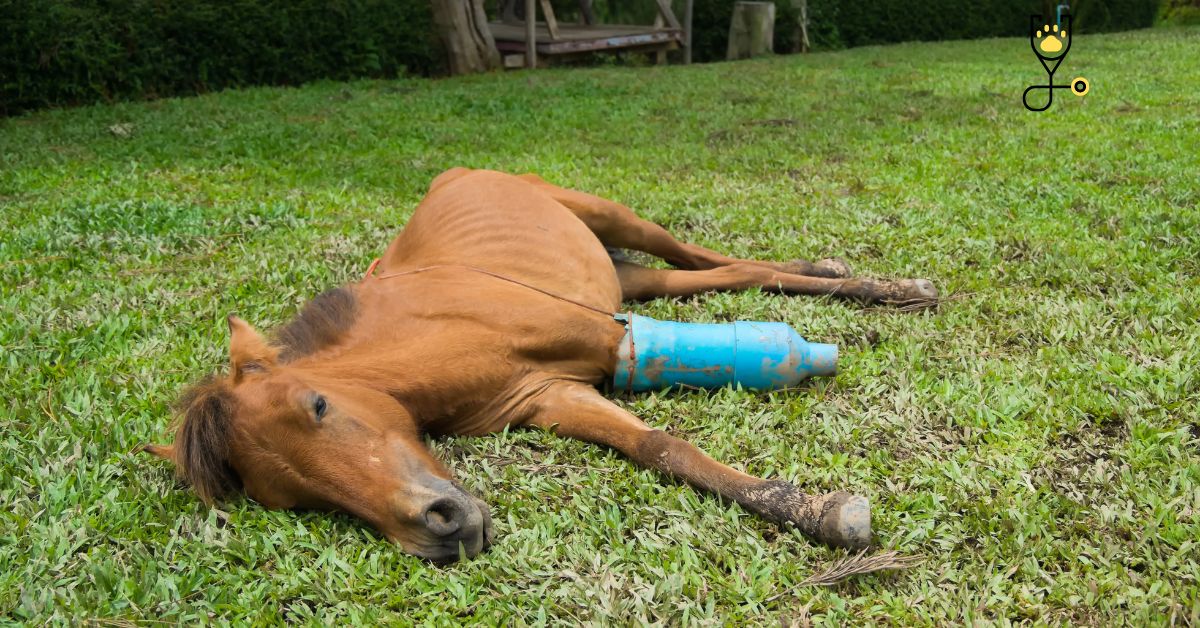There are many things that can go wrong with a horse. From illnesses to accidents, horses are susceptible to a variety of health problems. And while some horse owners do their best to care for their animals, even going so far as to spend large sums of money on medical treatments, there are some cases where it is simply not possible to save the horse’s life. One such example is when a horse breaks its leg. While broken legs can often be repaired with surgery, the rehabilitation process required is lengthy and costly – and sometimes it’s simply not worth it. As a result, many horses with broken legs are euthanized. Here are 15 reasons why broken legs often lead to the death of horses.
1. Horses’ Legs Bear a Lot of Stress
The legs of a horse are designed to bear a lot of weight and stress. That’s why they’re so big and muscular. But this design also makes them susceptible to injury. A small misstep can easily result in a broken leg, especially if the horse is carrying a lot of weight.
2. Horses’ Legs Are Not Very Flexible
Horses’ legs are not very flexible, which means that they’re more likely to break when they’re bent the wrong way. This lack of flexibility also makes it difficult for horses to recover from breaks since they can’t simply adjust their position to take the pressure off the injured leg.

3. Surgery Is Often Required to Fix Broken Legs
If a horse’s leg is broken, surgery is often required to fix it. This is a complicated and expensive procedure, and it’s not always successful. Even if the surgery goes well, the horse will still need to undergo months of rehabilitation, which can be costly.
4. There Is a Risk of Infection After Surgery
There is always a risk of infection after surgery, no matter how clean the operating room is. This is particularly true for horses, whose legs are constantly exposed to dirt and bacteria. If an infection sets in, it can be very difficult to treat, and it may even lead to sepsis (a potentially life-threatening condition caused by infection).
5. Horses With Broken Legs Often Suffer From Pain
Horses with broken legs often suffer from pain, both during the healing process and after the leg has healed. This pain can be difficult to manage, and it may even require the use of powerful painkillers.
6. Broken Legs Can Lead to Lameness
Broken legs can often lead to lameness, even after they have healed. This is because the bones may not heal properly, or the muscles and tendons may be damaged. As a result, the horse may not be able to walk correctly, and it may even need to be euthanized.
7. Horses With Broken Legs May Never Be Able to Race Again
If a horse breaks its leg while racing, it is unlikely that it will ever be able to race again. This is because racing puts a lot of stress on the legs, and a horse with a weakened leg is at risk of re-injuring it. As a result, many racehorses are euthanized after suffering a broken leg.

8. Broken Legs Can Be Difficult to Diagnose
Broken legs can be difficult to diagnose, especially if they’re not obvious. X-rays may be needed to confirm the diagnosis, and even then, it can be tricky to determine the extent of the injury. This delay in diagnosis can make it more difficult to treat the injury and may even lead to complications.
9. There Is No Guarantee That Surgery Will Be Successful
There is no guarantee that surgery will be successful, even if it is performed by a skilled veterinarian. Complications can occur, and the horse may not be able to recover from the surgery. In some cases, the surgery may even make the injury worse.
10. Horses With Broken Legs Often Need to Be Euthanized
Horses with broken legs often need to be euthanized, especially if they’re racehorses. This is because the injuries are usually severe, and the recovery process is long and difficult. Even if the horse does recover, it may never be able to race again. As a result, many owners choose to euthanize their horses rather than go through all of the trouble (and expense) of treatment.
11. The Cost of Treatment Can Be Prohibitive
The cost of treatment for a broken leg can be prohibitive, especially if surgery is required. This is because the procedure is complicated and expensive, and it often requires months of rehabilitation. As a result, many owners simply cannot afford to treat their horses’ injuries.
12. There Is Always a Risk of Complications
There is always a risk of complications when treating a broken leg, no matter how experienced the veterinarian is. This is because the bones may not heal properly, or the muscles and tendons may be damaged. As a result, the horse may not be able to walk correctly, and it may even need to be euthanized.

13. Broken Legs Are Serious Injuries
Broken legs are serious injuries that can have a lasting impact on a horse’s health. They often require surgery and months of rehabilitation, and they can even lead to lameness or euthanasia. As a result, it is important to be aware of the risks involved in racing and take steps to prevent injuries.
14. You Can Help Prevent Broken Legs by Wearing Proper Protective Gear
You can help prevent broken legs by wearing proper protective gear, such as boots and wraps. This will help to protect the legs from impact and prevent injuries in the event of a fall.
15. You Should Also Be Sure to Inspect the Track Before Racing
You should also be sure to inspect the track before racing. This will help to identify any potential hazards that could cause an injury. If you see something that looks unsafe, be sure to report it to the race officials so that they can take steps to fix the problem.
Tips To Prevent Your Horse From Getting A Broken Leg
1. Warm up your horse before you ride.
2. Make sure you are using the proper gear for your horse.
3. Be familiar with the track that you will be riding on.
4. Inspect your horse’s legs regularly for any injuries or soreness.
5. Do not overwork your horse.
6. Give your horse time to rest and recover after races or hard workouts.
7. If you notice any changes in your horse’s behavior, consult a veterinarian immediately.
Conclusion
Broken legs are serious injuries that can have a lasting impact on a horse’s health. They often require surgery and months of rehabilitation, and they can even lead to lameness or euthanasia. As a result, it is important to be aware of the risks involved in racing and take steps to prevent injuries. You can help prevent broken legs by wearing proper protective gear, such as boots and wraps. You should also be sure to inspect the track before racing. If you see something that looks unsafe, be sure to report it to the race officials so that they can take steps to fix the problem.
Frequently Asked Questions
1. What are the most common causes of broken legs in horses?
The most common causes of broken legs in horses are falls and collisions.
2. How can I tell if my horse has a broken leg?
If your horse is limping or refusing to put weight on one of its legs, it may have a broken leg. Other signs include swelling, heat, and pain in the affected area.
3. How do vets treat broken legs in horses?
Vets typically treat broken legs with surgery, followed by months of rehabilitation. In some cases, the horse may need to be euthanized.
4. Can a horse with broken legs recover?
Horses with broken legs often recover if they receive proper treatment. However, the injuries can have a lasting impact on their health and may cause lameness or other problems.
5. How can I prevent my horse from getting a broken leg?
You can help prevent broken legs by wearing proper protective gear, such as boots and wraps. You should also be sure to inspect the track before racing. If you see something that looks unsafe, be sure to report it to the race officials so that they can take steps to fix the problem.





